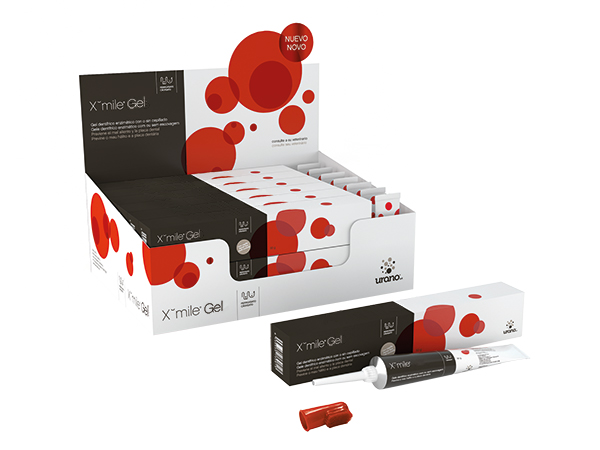
Oral hygiene
Xmile Gel
Xmile Gel prevents bad breath and the formation of dental plaque and tartar because it has 15% egg yolk. Daily care product for teeth and gums, helping to prevent tartar and dental plaque. It also incorporates enzymes and a mucoadhesive component that makes the product stay in contact with the gums for a longer time, even without brushing.
Information for the veterinarian
The study carried out by Banfield Pet Hospitals 1 in a population of 2.5 million dogs and 500,000 cats found that the prevalence of dental disease has increased by 23% since 2006, and now affects 76% of dogs and 63% of cats.
Although dental disease is a common problem, veterinarians find it hard to raise awareness among pet owners of the importance of oral hygiene. This is because pet owners see the vet as their pet’s doctor, not its dentist
Owners generally ignore their pet’s oral hygiene because they are unaware of the need to guard against periodontal disease, and of the serious consequences of not doing so.
Urano is committed to providing veterinarians with innovative products that can be sold through veterinary clinics. We focus on prevention, and most of our products are developed for the field of preventive medicine.
Pet dental hygiene is one of the cornerstones of preventive medicine, and is as important as vaccination and worming. This is why we strive to develop products and tools that help veterinarians boost customer loyalty and trust, and increase their revenue.
We launched our Xmile® line in 2014 to place oral hygiene in the hands of the vet. Xmile® Gel gives you a further tool with which you can raise your customer’s awareness of the importance of the advice and care of a professional vet in maintaining the oral hygiene of their pet.
Dental plaque can contain up to 30 different species of G+ and G- bacteria, mostly porphyromonas, which are involved in the development and progression of most cases of periodontal disease. Porphyromonas are secondary colonisers of the gingival sulcus. Their proteolytic capacity, together with changes in the host’s local immune response and subsequent inflammatory reaction, turn periodontal destruction into a chronic process. In the study Detection of putative periodontal pathogens in subgingival specimens of dogs6 , published in The Brazilian Journal of Microbiology (2007), PCR analysis of gingival tissue samples obtained from 40 dogs (25 with periodontal disease and 15 with no signs of disease) found the following bacteria populations in samples with periodontal disease:
- 64 % Porphyromonas gingivalis
- 36 % Campylobacter rectus
- 24 % Actinobacillus actinomycetemcomitans
- 20 % Prevotella intermedia
- 20 % Tannerella forsythensis
- 16 % Fusobacterium nucleatum
The prevalence of Porphyromonas gingivalis in samples from animals without periodontal disease was only 6.66%. In short, dental plaque is the community of bacteria that for a biofilm, embedded in a matrix. This makes them much more resistant to the action of antibiotics and antiseptics.
The antibacterial properties of saliva are an important factor in the oral defence system. This protective effect can be further improved with the regular use of tooth gels containing enzymes and other active ingredients that enhance the natural protection provided by saliva.
Source: Visual atlas of oral pathologies, 2016. ISBN: 978-84-16315-77-2. Editorial Servet, Grupo Asís.
DOCUMENTATION FOR THE VETERINARY
* This information is available only to veterinarians. Clicking the download link declares that possess appropriate qualifications to access the content..

